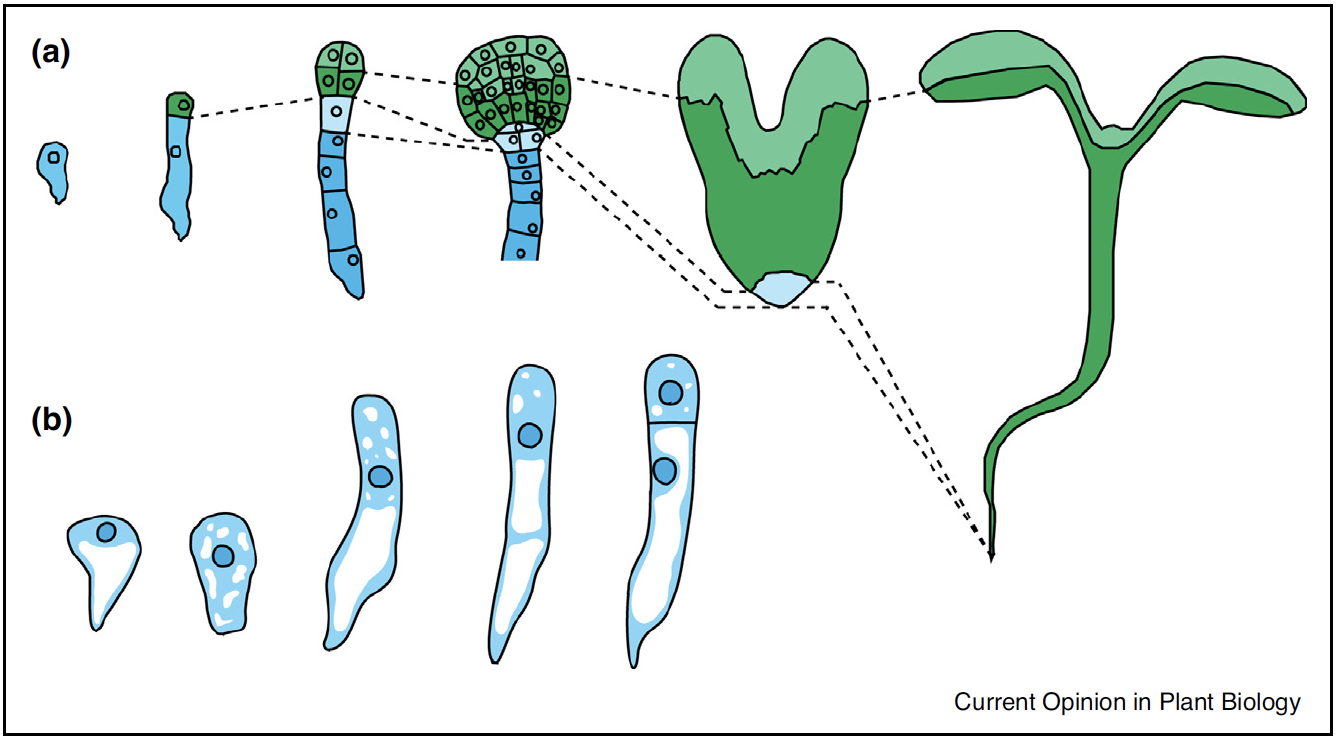博文
Current Opinion in Plant Biology:有花植物合子极性和早期胚胎发生综述
||
Square one: zygote polarity and early embryogenesis in flowering plants
First author: Kai Wang; Affiliations: Max Planck Institute for Developmental Biology (马克斯·普朗克发育生物学研究所): Tübingen, Germany
Corresponding author: Martin Bayer
In the last two decades, work on auxin signaling has helped to understand many aspects of the fundamental process underlying the specification of tissue types in the plant embryo. However, the immediate steps after fertilization including the polarization of the zygote and the initial body axis formation remained poorly understood. Valuable insight into these enigmatic processes has been gained by studying fertilization in grasses. Recent technical advances in transcriptomics of developing embryos with high spatial and temporal resolution give an emerging picture of the rapid changes of the zygotic developmental program. Together with the use of live imaging of novel fluorescent marker lines, these data are now the basis of unraveling the very first steps of the embryonic patterning process.

在过去的二十年中,有关植物生长素信号转导的研究已经帮助我们理解了植物胚胎中不同组织类型特化背后潜在的基本生物学过程的许多方面。 但是,植物在受精后的生物学进程,包括合子极化和最初体轴形成等,目前仍然知之甚少。 通过研究草类植物的受精作用,我们已经获得了对这些神秘过程的宝贵见解。 最近在高时空分辨率的胚胎发育转录组学最新技术中所取得的进展,为合子发育进程的快速变化提供了新的蓝图。 现在,结合使用新的荧光标记株系的实时成像,这些数据将成为揭示胚胎模式建成第一步的基础。
通讯:Martin Bayer (http://eb.mpg.de/cell-biology/martin-bayer/)
研究方向:植物受精后指导胚胎模式建成的信号途径。
doi: https://doi.org/10.1016/j.pbi.2019.10.002
Journal: Current Opinion in Plant Biology
Published online: November 11, 2019

https://blog.sciencenet.cn/blog-3158122-1206311.html
上一篇:the plant journal:拟南芥KNAT3/7作用于花序中的次生细胞壁沉积
下一篇:Cell:双星藻纲植物基因组为陆地植物演化提供新的视野
全部作者的其他最新博文
- • Plant Physiology:CsMADS3促进柑果中的叶绿素降解和类胡萝卜素合成(华中农业大学)
- • Molecular Plant:LBD11-ROS反馈调节作用于拟南芥的维管形成层增殖和次生生长(浦项科技大学)
- • Science Advances:根结线虫通过调控植物的CLE3-CLV1模块,促进侵染进程(日本熊本大学)
- • Nature Communications:油菜素内酯参与植物营养生长期转变的分子机制解析(浙江农林大学)
- • Current Biology:光合作用产生的蔗糖驱动侧根“生物钟”(德国弗莱堡大学)
- • PNAS:花同源异型基因在叶中被抑制、花中被激活的分子机制(南卡罗来纳大学)